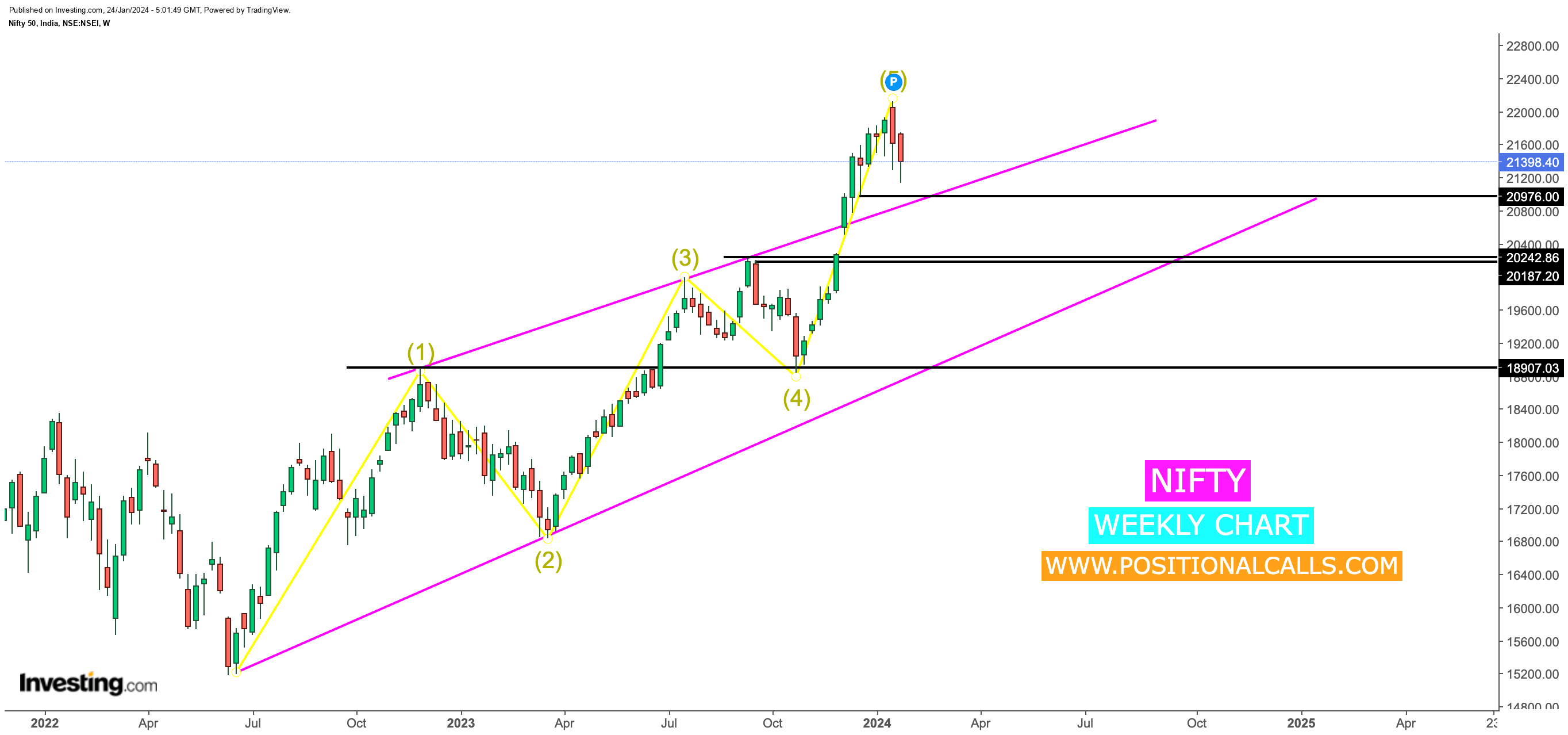
Nifty View -Nifty Is On Retesting CMP 21379.10
Resistance-21346
Support1-20976
Support2-20050-20150
View- Swing To Short Term
Disclaimer: This blog entry is intended primarily for informational reasons; it should not be interpreted as financial advice. Kindly seek advice from a certified financial counsellor before making any investment choices.
Nifty View: Introduction:
The Indian stock market has been on a rollercoaster ride in recent months. After reaching record highs in 2023, the Nifty 50 index has embarked on a correction phase, retracing some of its breathtaking gains. This has left investors scratching, wondering whether the bull run is over or merely a temporary blip.
One crucial factor in this scenario is the retesting phase the Nifty is undergoing. Understanding this retesting and its potential implications is critical to navigating the market and making informed investment decisions.
Nifty View: What is Retesting?
In simple terms, retesting refers to the price revisiting a previously broken support or resistance level. This revisiting can occur after a breakout (when the price moves above resistance) or a breakdown (when the price falls below support).
There are two main types of retests:
- Pullback Retest:
This shallow retest dips to near the broken level but quickly bounces back. It’s generally seen as a confirmation of the breakout/breakdown. - Deep Retest:
This more significant retest can retrace a substantial portion of the previous move. It can be more challenging to interpret and often leads to increased volatility.
Nifty View: Why is Retesting Important?
Retesting plays a crucial role in technical analysis for several reasons:
- Validation of Breakouts/Breakdowns:
A successful retest of a broken level adds credence to the breakout/breakdown, suggesting sustained momentum in the new direction. - Identification of Support/Resistance:
Retesting helps identify new levels of support and resistance determined by the price to find temporary equilibrium. - Risk Management:
Identifying retests allows traders to implement appropriate risk management techniques, including stop-loss orders, to mitigate potential losses.
Nifty View: The Nifty Retesting Phase:
The Nifty 50 is retesting the 20,050-20,150 zone, coinciding with its previous breakout level in September 2023. This retest comes after a sharp correction from its all-time high of 22,124.15 in January 2024.
Key Factors Influencing the Retest:
- Global Market Headwinds: Rising interest rates in the US and global recessionary fears dampen investor sentiment worldwide, impacting emerging markets like India.
- Domestic Macroeconomic Concerns: Inflationary pressures and geopolitical tensions within the region are adding to the nervousness in the Indian market.
- Profit Booking by Institutional Investors: After substantial gains in 2023, some institutional investors might be taking profits off the table, leading to selling pressure in the market.
Nifty View: Possible Outcomes of the Retest:
There are three primary potential outcomes of the Nifty’s current retesting phase:
- Successful Retest and Uptrend Continuation: If the Nifty finds strong support around the 18,500-18,800 zone and bounces back convincingly, it could signal a continuation of the uptrend, with potential for further gains in the long term.
- False Breakout and Downward Trend:
If the Nifty breaks below the 18,800 level and fails to regain this support, it could indicate a false breakout and potentially signal a reversal to a downward trend. - Extended Consolidation:
The Nifty could remain range-bound within the 18,800-20,200 zone for an extended period, awaiting more clarity on global and domestic factors before making a decisive move.
Nifty View: Technical Indicators to Watch:
While fundamental factors influence the overall market sentiment, technical indicators can offer insightful information about the near-term price action. Here are some key technical indicators to watch during the Nifty’s retesting phase:
- Moving Averages:
The trend direction can be gauged by looking at the relationship between the Nifty and its key moving averages (50DMA, 100DMA, 200DMA). - Relative Strength Index (RSI):
An RSI value above 70 indicates overbought conditions and potential for a pullback, while a value below 30 suggests oversold conditions and potential for a bounce.
- MACD:
The divergence or convergence of the MACD and signal line can indicate bullish or bearish momentum.
Read More: HDFC Bank: Cracks in the Colossus? Unpacking the Recent Share Price Slump
Nifty View: Investment Strategies during Retesting:
Investors must adopt a cautious and disciplined approach with the Nifty in a retesting phase. Here are some potential strategies to consider:
- Buy-on-Dips: Investors with a long-term perspective